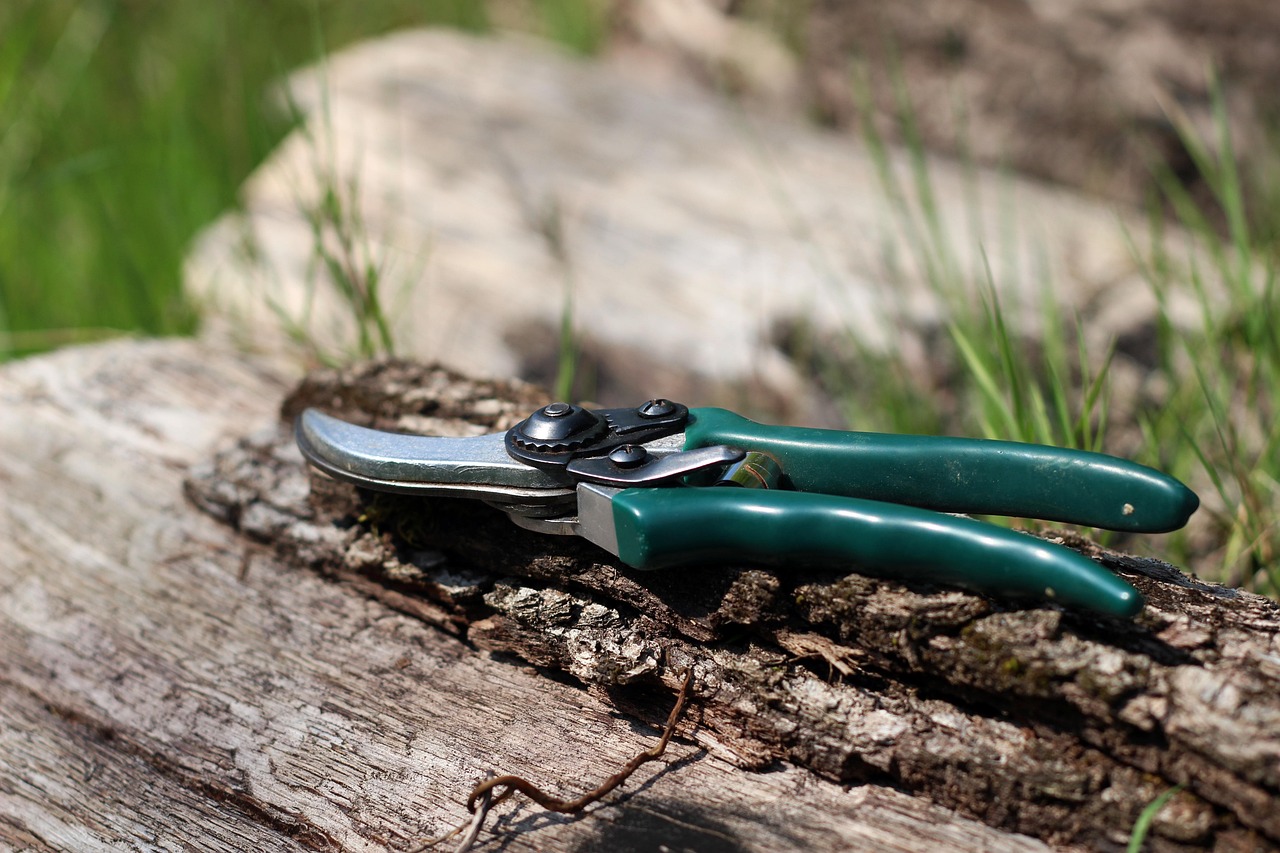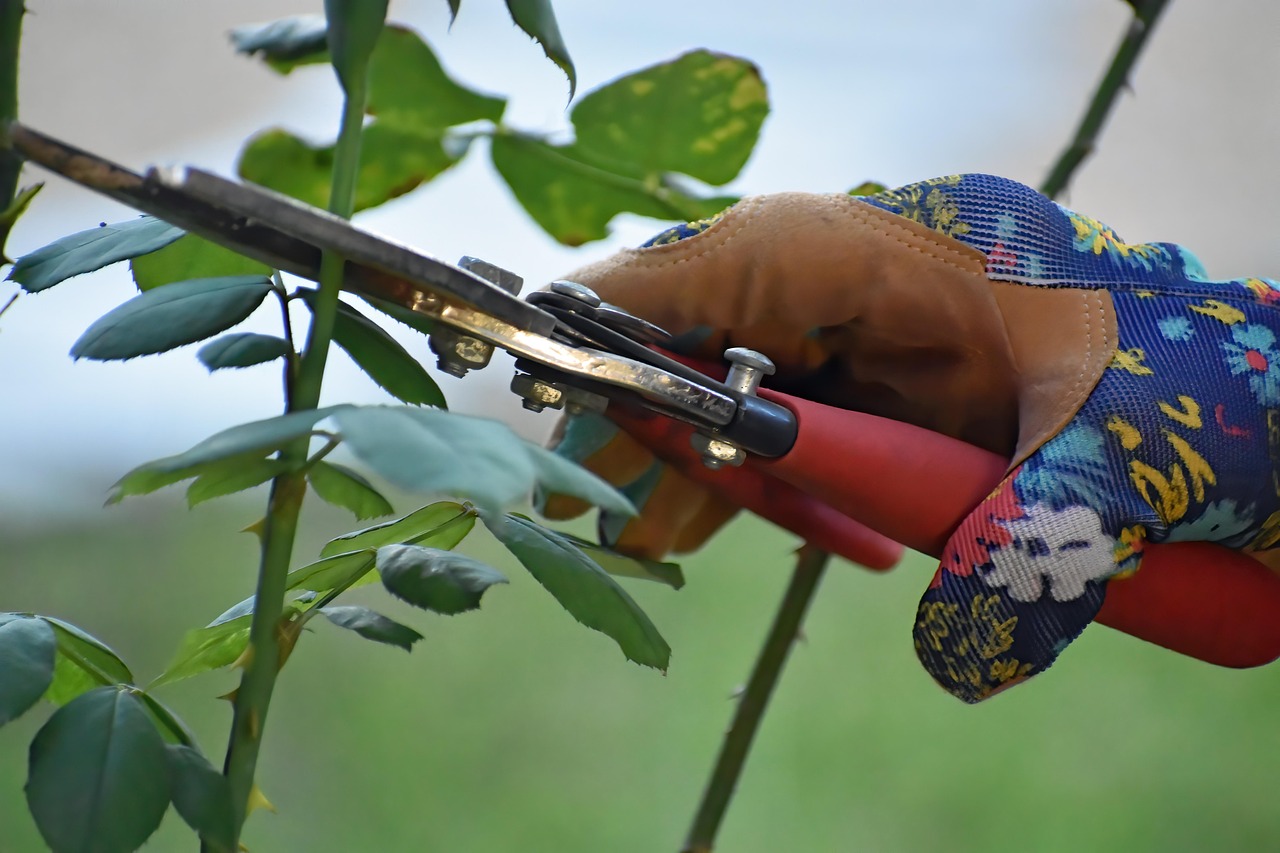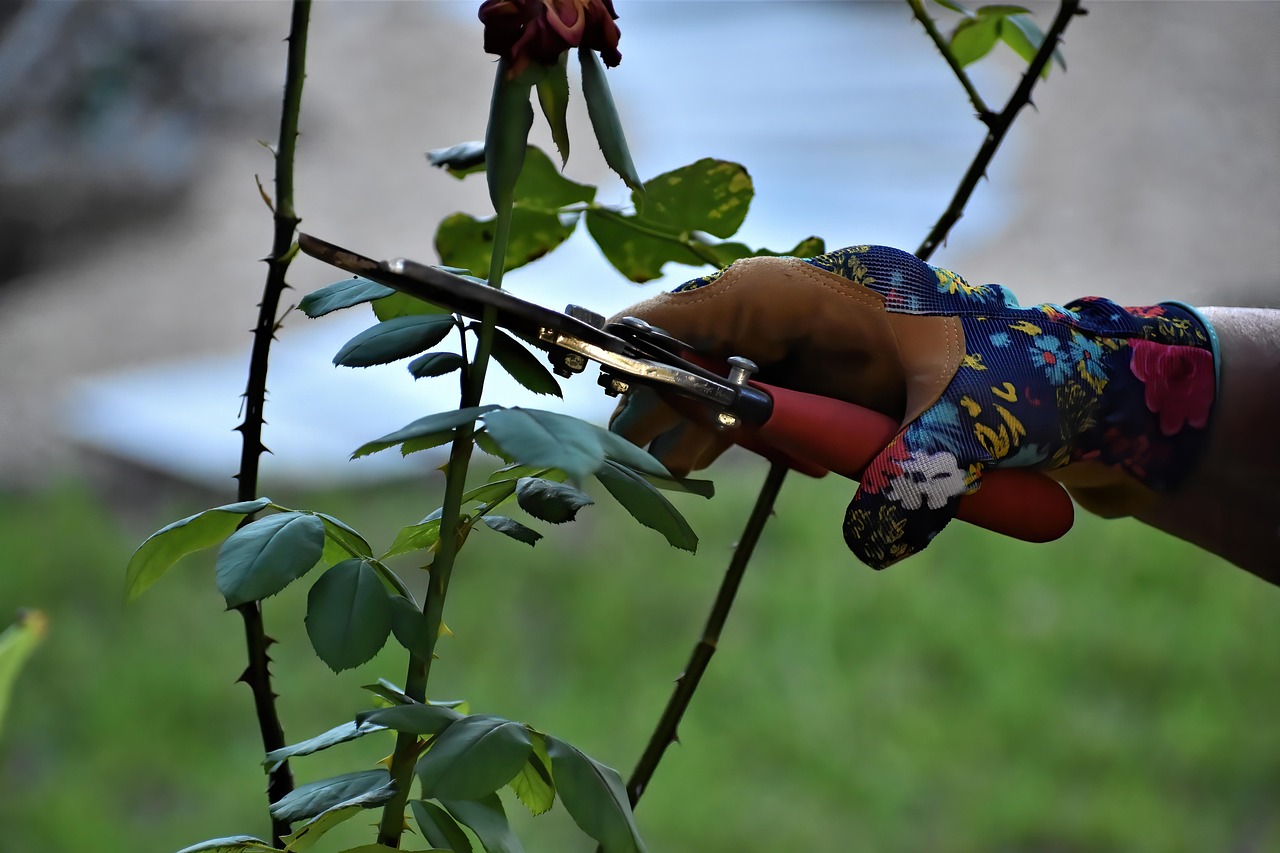Pruning roses effectively helps reduce pest and bug issues by improving air circulation, removing dead or diseased wood, and encouraging healthy growth. By maintaining the plant’s structure, you can deter pests and promote a robust flowering cycle.
Roses are one of the most beloved flowers in gardens around the world. However, they can be prone to various pests and diseases that threaten their beauty and health. Common issues include aphids, spider mites, and fungal infections. Pruning plays a crucial role in managing these problems effectively. By trimming the plants correctly, gardeners can significantly reduce pest populations and improve the overall vigor of their rose bushes.

One of the primary benefits of pruning is enhancing air circulation. Dense foliage can create a microclimate that favors pests and diseases. When air can flow freely around the plant, it reduces humidity and dries out any moisture that could contribute to fungal growth. Additionally, pruning allows sunlight to reach all parts of the plant, promoting healthy growth.
Another important reason for pruning is the removal of dead or diseased wood. Insects and diseases often take advantage of weakened or dead areas of the plant. By cutting away these sections, gardeners can minimize hiding spots for pests. It also encourages new growth that is more resistant to infestations.
Understanding Common Rose Pests
Before discussing pruning techniques, it is essential to understand the common pests that affect roses. The following table outlines some frequently encountered rose pests along with their characteristics:

| Pest | Description | Symptoms |
|---|---|---|
| Aphids | Small, soft-bodied insects that suck sap from plants. | Yellowing leaves, curled foliage, sticky residue on leaves. |
| Spider Mites | Tiny pests that spin webs on the undersides of leaves. | Speckled leaves, webbing on plants, overall decline in health. |
| Japanese Beetles | Shiny green and bronze beetles that feed on foliage and flowers. | Holes in leaves, skeletonized foliage. |
| Powdery Mildew | A fungal disease that appears as white powder on leaves. | White spots on leaves, stunted growth. |
Understanding these pests is vital for effective management. Each pest requires a different approach for control, and pruning is a foundational step that supports overall plant health.
With this knowledge, gardeners can begin to implement effective pruning strategies. The timing and technique of pruning are critical factors in ensuring that roses remain healthy and vibrant. Typically, the best time to prune roses is in early spring when new growth is just beginning to emerge. This timing allows gardeners to remove any winter damage while also promoting robust new growth.
Essential Pruning Techniques
When it comes to pruning roses, there are several techniques that can be employed. Each method has its purpose and can help in minimizing pest issues:

- Cleansing Prune: This involves removing dead or diseased wood from the plant. Cut back to healthy tissue to prevent further spread of disease.
- Thinning: Remove some branches to allow for better air circulation within the plant. Aim for an open center to promote airflow.
- Heading Back: This technique involves cutting back stems to a bud or node. It encourages bushier growth and helps maintain plant shape.
- Deadheading: Regularly removing spent blooms encourages new flowers and reduces the chance of disease encroaching on the plant.
Each of these techniques contributes to healthier rose bushes. By implementing them during the appropriate seasons, gardeners can effectively manage pest populations and promote healthier plants over time.
As roses grow, it is essential to observe them regularly for any signs of pests or diseases. Early detection is key in preventing larger infestations. Pruning should be seen as an ongoing practice rather than a one-time event. Regular maintenance not only enhances the aesthetics of the garden but also fortifies plants against potential pest issues.
In addition to proper pruning techniques, using sharp, clean tools is essential for making precise cuts. Dull tools can cause damage and stress to the plant, making it more susceptible to pests. It is advisable to disinfect tools before use to prevent the transfer of diseases between plants.

By understanding the relationship between pruning and pest management, gardeners can foster a thriving rose garden that minimizes common problems associated with bugs and diseases. Regular care and attention will lead to beautiful blooms that enhance any garden landscape.
The Role of Timing in Pruning Roses
Timing is a crucial factor when it comes to pruning roses. The right timing not only encourages healthy growth but also reduces the risk of pest infestations. Understanding the different growth stages of roses can help gardeners determine the best time for pruning.
- Early Spring: This is typically the ideal time to prune most rose varieties. As the plants begin to show signs of new growth, pruning encourages robust flowering and minimizes pest attractiveness.
- Late Winter: For certain climates, particularly those with milder winters, late winter pruning may be more effective. This timing allows for the removal of any winter damage before new growth begins.
- Post-Bloom: Deadheading, or cutting back spent flowers, should occur after blooming. This not only promotes further blooming but also helps in pest management by removing decaying material that can attract pests.
Being mindful of these timings ensures that your roses remain healthy and less susceptible to pests, allowing for an abundant display of blooms throughout the growing season.
Pruning Techniques for Specific Rose Varieties
Different types of roses require different pruning techniques to thrive. Understanding the specific needs of each variety is essential for effective pest management and plant health. Below are some common rose varieties and their recommended pruning techniques:
| Rose Variety | Pruning Technique | Notes |
|---|---|---|
| Hybrid Tea Roses | Cut back to 3-5 buds on each stem. | Focus on removing dead wood and shaping the plant. |
| Floribunda Roses | Prune to 3-4 buds per stem, shaping for fullness. | This encourages bushy growth and more blooms. |
| Climbing Roses | Train and cut back laterals to encourage upward growth. | Remove old wood to promote new shoots. |
| Shrub Roses | Prune lightly, removing dead wood and shaping as necessary. | Focus on maintaining a natural shape. |
By applying the correct pruning techniques based on the rose type, gardeners can help ensure that their plants remain strong and less vulnerable to pests.
Signs of Pest Infestations and How Pruning Helps
Identifying signs of pest infestations early can save roses from severe damage. Here are some common signs that indicate a pest problem:
- Discolored Leaves: Yellowing or browning leaves may indicate a pest issue such as aphids or spider mites.
- Wilting Buds: Flowers that fail to bloom or wilt prematurely can be a sign of stress caused by pests.
- Visible Insects: Regular inspections can help spot pests like beetles or aphids on leaves and stems.
- Webbing: The presence of fine webs on leaves usually indicates spider mites.
Pest control measures, including pruning, can reduce infestations. By removing affected areas of the plant, you can limit the spread and impact of pests. Furthermore, ensuring that healthy foliage remains can strengthen the plant’s defenses against pests.
The Importance of Aftercare Post-Pruning
After pruning, proper care is essential to help roses recover and flourish. Here are some aftercare steps that should be followed:
- Watering: Ensure that roses receive adequate water after pruning. This helps them recover from the stress of cutting.
- Fertilization: Applying balanced fertilizer after pruning can provide essential nutrients for new growth. Choose a fertilizer designed specifically for roses.
- Pest Monitoring: Keep an eye out for any signs of pests or diseases after pruning. Early detection allows for prompt action.
- Mulching: Adding mulch around the base helps retain moisture and suppress weeds which could harbor pests.
These aftercare practices enhance the effectiveness of pruning by promoting healthy regrowth and reducing vulnerability to pests and diseases.
Pest Prevention Strategies Beyond Pruning
While pruning is a fundamental practice for managing rose pests, other strategies can also help prevent infestations. Some effective pest prevention strategies include:
- Cultural Practices: Implement crop rotation and avoid planting roses in the same spot each year to prevent buildup of pests in the soil.
- Companion Planting: Certain plants can repel pests. Consider planting marigolds or garlic near roses to deter aphids and other harmful insects.
- Regular Inspections: Frequent checks for signs of pests or diseases help catch problems early before they escalate.
- Pesticide Use: If necessary, use organic pesticides as a last resort. Always follow label instructions to ensure safety and efficacy.
Taking a holistic approach to rose care by integrating these strategies with regular pruning ensures a vibrant and healthy rose garden that resists common pest issues effectively.
Understanding Rose Diseases
In addition to pests, roses are susceptible to various diseases that can hinder their growth and beauty. Understanding these diseases is essential for effective management alongside pruning practices. Here are some common rose diseases that gardeners should be aware of:
| Disease | Description | Symptoms |
|---|---|---|
| Black Spot | A fungal disease causing dark spots on leaves. | Yellowing leaves, premature leaf drop. |
| Powdery Mildew | A fungal infection that appears as white powder on leaves. | White spots on leaves, stunted growth. |
| Rust | A fungal disease that causes orange or reddish spots. | Brown or yellow streaks on leaves, leaf drop. |
| Botrytis Blight | A fungal infection that often affects blooms and stems. | Gray mold on flowers, wilting buds. |
Each of these diseases can significantly impact the health of rose plants. Early identification and management are crucial to prevent these issues from spreading throughout the garden.
Pruning to Manage Disease Risk
Pruning can be an effective strategy to manage the risk of disease in roses. Here are several ways in which proper pruning techniques contribute to disease prevention:
- Removing Infected Material: Pruning helps eliminate any diseased branches or foliage. This action prevents pathogens from spreading to healthy parts of the plant.
- Improving Airflow: By thinning the bush and creating space between branches, pruning enhances airflow. Improved circulation reduces humidity levels around the plant, creating an unfavorable environment for fungal diseases.
- Encouraging Healthy Growth: Regular pruning promotes new growth, which is generally more resilient to diseases. Healthy plants are better equipped to defend against infections.
- Seasonal Timing: Pruning at the right time, especially before new growth begins, can help remove any overwintering spores or pathogens.
By integrating these practices into regular pruning routines, gardeners can effectively reduce the likelihood of disease outbreaks in their rose gardens.
The Connection Between Pruning and Pest Management
Understanding the relationship between pruning and pest management can provide deeper insights into maintaining a healthy rose garden. Here are several key connections:
- Reduced Habitat: Pruning decreases dense foliage where pests can hide and breed. A well-pruned rose bush limits the shelter available for harmful insects.
- Less Stress on Plants: Overgrown plants may experience stress from competition for nutrients and water. Healthy roses are less attractive to pests, as they are more vigorous and resilient.
- Targeted Treatments: When pests do invade, a well-pruned plant allows for easier application of targeted treatments, whether mechanical (like hand-picking) or chemical (like pesticides).
- Improved Monitoring: With less foliage, it becomes easier to spot early signs of pest infestations or damage. Regular monitoring aids in quick intervention.
These connections highlight how pruning serves not only as a maintenance practice but also as a proactive pest management strategy, ultimately promoting a healthier garden environment.
Tools and Techniques for Effective Pruning
The right tools are essential for effective pruning. Using improper tools can lead to damage and stress on plants. Below is a list of essential tools along with their specific uses:
- Pruning Shears: Ideal for cutting through small branches and stems. Choose bypass shears for clean cuts.
- Loppers: Useful for thicker branches that are too large for pruners. They provide more leverage and strength.
- Saw: For larger branches, a pruning saw is necessary. It allows for larger cuts without damaging the plant.
- Gloves: Protect your hands from thorns and sharp edges while handling roses.
- Disinfectant: Use a solution of bleach or rubbing alcohol to disinfect tools before and after use to prevent disease spread.
Employing these tools correctly ensures a more efficient pruning process and helps maintain the health of your roses.
Training Roses Through Pruning
Training roses through pruning is an essential practice that enhances their structure and appearance. This technique involves shaping the plant as it grows, encouraging desirable forms while also aiding in pest management. Here are some common training methods:
- Cane Training: This involves selecting strong canes and removing weaker ones. It encourages upward growth and supports better air circulation.
- Fan Training: Often used for climbing roses, this method spreads out branches horizontally against a wall or trellis to maximize light exposure.
- Bending Techniques: Gently bending stems can encourage new growth in different directions, improving overall structure and exposure to sunlight.
- Mounding: For certain shrub types, mounding the soil around the base can promote robust root systems while protecting against pests.
By training roses effectively, gardeners can create beautiful, healthy plants that are less prone to pest infestations while maximizing their blooming potential.
The integration of these practices into your routine will support a thriving rose garden that minimizes both pest issues and disease risks, leading to lush blooms and vibrant greenery throughout the growing season.
Enhancing Rose Health Through Integrated Practices
To ensure the long-term health of roses, it’s essential to adopt an integrated approach that combines pruning with other cultural practices. These practices create a holistic environment that minimizes the risk of pest infestations and diseases while promoting vigorous growth. Here are some additional strategies to consider:
- Soil Health: Healthy soil is the foundation for robust plants. Regularly amend the soil with organic matter such as compost. This enhances nutrient availability and improves drainage, which is crucial for root health.
- Watering Practices: Consistent and appropriate watering is vital. Deep watering encourages roots to grow deeper into the soil, making roses more resilient to drought and stress. Avoid overhead watering, as this can promote fungal diseases.
- Mulching: Applying a layer of mulch around rose bushes helps retain moisture, suppress weeds, and maintain even soil temperatures. Organic mulches, like wood chips or straw, also enrich the soil as they break down.
- Diversity in Planting: Consider incorporating a variety of plants in your garden. Biodiversity can help disrupt pest life cycles and reduce the likelihood of infestations.
By focusing on these interconnected practices alongside regular pruning, gardeners can create an ecosystem that supports healthy rose plants and minimizes pest issues.
Utilizing Technology in Rose Care
In today’s digital age, technology can play a significant role in maintaining a healthy rose garden. Here are some ways technology can assist gardeners:
- Mobile Apps: There are numerous gardening apps available that provide information on pest identification, disease management, and optimal pruning times tailored to specific rose varieties.
- Soil Moisture Sensors: These devices help monitor soil moisture levels and can alert gardeners when it is time to water, thus preventing over or under-watering.
- Online Communities: Joining online gardening forums or social media groups allows gardeners to share experiences and advice about rose care and pest management.
- Drones and Imaging Technology: For larger gardens, drones equipped with imaging technology can help monitor plant health from above, identifying areas that may need attention.
By leveraging technology, gardeners can make informed decisions that enhance their rose care practices while minimizing pest issues.
Encouraging Beneficial Insects
In addition to managing pests directly, creating an environment that attracts beneficial insects is a powerful strategy in pest management. Beneficial insects play a crucial role in controlling pest populations naturally. Here are some ways to encourage beneficial insects in your garden:
- Nectar-Rich Plants: Plant flowers that provide nectar and pollen for beneficial insects like ladybugs, lacewings, and bees. Examples include marigolds, yarrow, and dill.
- Habitat Creation: Provide habitats such as insect hotels or shelter for overwintering insects. This encourages them to return to your garden each season.
- Avoiding Broad-Spectrum Pesticides: Use targeted treatments only as needed. Broad-spectrum pesticides can harm beneficial insects and disrupt the natural balance in your garden.
By fostering a welcoming environment for beneficial insects, gardeners can enhance natural pest control while enjoying a more balanced ecosystem in their rose gardens.
Conclusion
The journey of cultivating beautiful roses while minimizing common pest and bug issues involves a comprehensive approach rooted in knowledge and practice. Pruning serves as a foundational practice that not only shapes the physical structure of rose plants but also enhances their health and resilience against pests and diseases.
Through proper timing, techniques tailored to specific varieties, and understanding the connection between pruning and pest management, gardeners can create thriving rose bushes that bloom vibrantly season after season. Integrating additional practices such as maintaining soil health, utilizing technology, encouraging beneficial insects, and ensuring proper watering will further support the overall well-being of roses.
Ultimately, a proactive and informed approach to rose care will lead to stunning displays of flowers while minimizing the challenges posed by pests. By embracing these strategies and remaining observant of plant health, gardeners can enjoy the beauty of roses with confidence and satisfaction.
